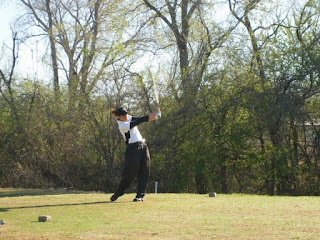Myofascial Release
Receiving the diagnosis of head and neck
cancer (HNC) is a life changing experience. An individual who receives this
diagnosis faces the possibility of undergoing surgery and/or chemo-radiotherapy
(CRT). With either of these potential life-saving options, one’s ability to
speak or swallow may be substantially affected. Thus, intervention from a
speech-language pathologist (SLP) is needed to improve upon altered
communication and dysphagia. A therapy technique that may be beneficial for individuals
post HNC is myofascial release.
Myofascial release is a therapeutic
intervention that involves massage to the muscles and fascia. (Kelly, 2014:
Myofascial, n.d; Shah & Bhalara, 2012). Fascia is the connective tissue
that surrounds the muscles. There are three layers of fascia, the superficial
fascia (directly under the skin), deep fascia (embedded into muscles), and
subserous fascia (lines the body cavities and organs) (Kelly, 2014: Myofascial,
n.d; Shah & Bhalara, 2012). There are three types of myofascial release,
direct (very intense), indirect (more gentle), and self (patient driven) (Kelly,
2014: Myofascial, n.d; Shah & Bhalara, 2012).
Personally, I have used myofascial
release with individuals with dysphagia post head and neck cancer and with
Parkinson’s disease. Other patient populations that may benefit include
individuals with TMJ disorder/issues, chronic pain, neck and shoulder
pain/tension, whiplash, post surgical and injury scarring may benefit (Kelly,
2014: Myofascial, n.d; Shah & Bhalara, 2012). Myofascial release would not
be indicated for individuals with aneurysm, open wounds, or who have an active
cancer (William, 2004).
Myofascial release is used in several
disciplines such as with chiropractors, physical therapists, and massage
therapists. Speech-language pathologists use this method typically in the
treatment of dysphagia or voice disorders. Myofascial release has also been
used to improve esophageal speech for laryngectomees (Marszałek
et al, 2009). Check out this videos for a peak at some different
myofascial release techniques!
According to American
Speech-Language-Hearing Association (2007), SLPs should only engage in practice
that they show competence. There are two main training places for MFR one is
with John Barnes (Barnes, n.d.) a physical therapist, and the other with John
Kelly another physical therapist (Ciao Seminars, 2013). The American
Speech-Language and Hearing Association approved training with John Kelly for
continuing education units. Personally, I attended the CEU course with John
Kelly and it was wonderful, I would highly recommend it! If you know of
additional training opportunities for myofascial release please post in the
comment below. Have you used myofascial release with your patients? Do you find
this technique useful?
References
American Speech-Language-Hearing Association. (2007). Scope
of Practice in Speech-Language Pathology. Retrieved from
http://www.asha.org/policy/SP2007-00283/
Barnes, J. (n.d.). Welcome to Myofascial Release - John
F. Barnes, PT. Retrieved from http://www.myofascialrelease.com
Ciao
Seminars. (2013). CIAO Seminars. Retrieved from http://www.ciaoseminars.com/searchResults.cfm
Gerwin,
R. D. (2005). A review of myofascial pain and fibromyalgia–factors that promote
their persistence. Acupuncture in
Medicine, 23(3), 121-134.
Harden,
R. N. (2007). Muscle pain syndromes. American
Journal of Physical Medicine & Rehabilitation, 86(1), S47-S58.
Hodgson,
L., & Fryer, G. (2006). The effect of manual pressure release on myofascial
trigger points in the upper trapezius muscle. International Journal of Osteopathic Medicine, 9(1), 33.
Hutcheson,
K. A. (2013). Late radiation-associated dysphagia (RAD) in head and neck cancer
survivors. American
Speech-Language-Hearing Association 61-72.
Hutcheson,
K. A., Bhayani, M. K., Beadle, B. M., Gold, K. A., Shinn, E. H., Lai, S. Y.,
& Lewin, J. (2013). Eat and exercise during radiotherapy or
chemoradiotherapy for pharyngeal cancers: use it or lose it. JAMA Otolaryngology–Head & Neck Surgery,
139(11), 1127-1134.
Louie,
K. S., Mehanna, H., & Sasieni, P. (2015). Trends in head and neck cancers
in England from 1995 to 2011 and projections up to 2025. Oral Oncology, 51(4), 341-348. doi:10.1016/j.oraloncology.2015.01.002
Marszałek,
S., Żebryk-Stopa, A., Kraśny, J., Obrębowski, A., & Golusiński, W. (2009).
Estimation of influence of myofascial release techniques on esophageal pressure
in patients after total laryngectomy. European
Archives of Otorhinolaryngology, 266(8), 1305-1308. doi:10.1007/s00405-008-0861-z
Massage Sloth. (2013,
August 18). Massage tutorial: Myofascial release for TMJ pain [Video
file]. Retrieved from https://www.youtube.com/watch?v=Dkdk_fjRTho
Pierson,
M. J. (2011). Changes in temporomandibular joint dysfunction symptoms following
massage therapy: a case report. International
Journal of Therapeutic Massage & Bodywork, 4(4), 37-47.
Purcell,
A. (2013). Head and neck lymphoedema management practices. Journal of Lymphoedema, 8(2), 8-15.
Results Massage and
Bodywork LLC. (n.d.). Myofascial release [image]. Retrieved from
http://results-massage.com/myofascial-release/
Shah,
S., & Bhalara, A. (2012). Myofascial release. International journal of Health Science & Reserarch, 2(2),
69-77.
Teachey,
W. S. (2004). Otolaryngic myofascial pain syndromes. Current pain and headache reports, 8(6), 457-462.
Vernon, H., & Schneider, M. (2008). Chiropractic
management of myofascial trigger points and myofascial pain syndrome: A
systematic review of the literature. Journal
of Manipulative & Physiological Therapeutics, 32(1), 14-24. doi:10.1016/j.jmpt.2008.06.012





Hi Mallory, I use MFR daily in my PT practice and receive a good number of referrals from SLPs and ENTs for swallowing and other related disorders. I also teach my version of this through the Foundations in Myofascial Release Seminar for Neck, Voice, and Swallowing Disorders using more of a neurological explanation for change. workhttp://www.waltfritzseminars.com/myofascialresource/foundations-in-myofascial-release-seminars/seminars-for-speech-and-voice-professionals-2
ReplyDeleteHi Walt! Thank you so much for posting! I just saw something on Facebook regarding the March conference. I wish I could make it! It looks like you have an April conference coming up as well. Any plans to teach in the Midwest?
ReplyDeleteI've just the Charlotte, NC and Milwaukee, WI classes confirmed thus far for 2016, with a few possibilities in the works. But I am always looking for an interested host hospital, clinic, or school. Email me from the website if you want to talk!
DeleteThis is very informative post. Thanks for sharing it here. I am suffering from constant headaches since last six months and thinking to get acupuncture done for relief. I have even shortlisted one of local acupuncture-mississauga clinic to visit.
ReplyDeleteVery informative article. Looking forward to more posts in near future. I have also found some interesting info on
ReplyDeleteswallowing disorder therapy in Kolkata
Very informative article. Looking forward to more posts in near future. I have also found some interesting info on speech therapy in kolkata
ReplyDelete